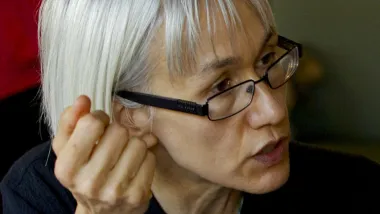How to generate ideas in planning is a question that many planning students ask. This can seem a mysterious and difficult process. Unfortunately, planning education has not always done a great job of helping students unpack this apparent mystery.

How to generate ideas in planning is a question that many planning students ask. This can seem a mysterious and difficult process. Unfortunately, planning education has not always done a great job of helping students unpack this apparent mystery.
While there are numerous ways planners do in fact generate ideas, in my experience many fall into one of the following categories.
- The black box—a method where the answer comes from a process that is not well described and based on an amalgam of experiences. When Katherine Crewe and I developed a typology of approaches to landscape architecture a few years back, we found that landscape architects well-known for artistic creativity often described their process in this way. However, I expect that most black box approaches supplement one or more of the others below.
- Analysis and synthesis—in this process planners analyze the situation and use that information to synthesize a solution. This is broadly applicable to most planning situations, however it does not give much guidance about the step from analysis to synthesis. Again, I think that many people following this process use one of the following methods to make that step.
- Precedents—in this approach planners look to examples and alter them to fit the situation at hand. This requires some analysis and also knowledge of planning practice. Better planners will have a good sense of such historic cases and in different places with a rich understanding of context. This has the advantage of being tried and true but ideas don’t always transfer well—think of a modernist high rise that does well in affluent parts of New York, in cities like Singapore, or for populations like seniors, but doesn't transfer well to different places and demographic groups.
- Patterns—these are a more abstract form of precedent, looking not at whole environments but at components. The exemplary work is Alexander et al.'s Pattern Language, but some uses of Lynch's The Image of the City would place it in this camp because he identifies patterns like paths and nodes. (There’s a more participatory use of the book, about understanding local perceptions, which is different.) The new urbanists have codified a number of these patterns and use them to generate their developments.
- Similes (and analogies and metaphors)—yet more abstract, an example helps explain this concept. One way landscape architecture faculty sometimes try to inspire students to think more broadly is to ask them to think of a designing a parking lot as a "park for cars." This can create new thinking—for example, parking lot that is planted, cooling, calming. A business improvement district can be seen to make a downtown like a mall (in terms of cleanliness, service, etc.). To think in similes, of course, it helps to understand precedents and have analyzed the sites.
There are likely several other ways people come up with ideas. Within each approach there are many analytical methods, precedents, patterns, and similes making each one complex. However, my point is that generating ideas is a process that can be learned and improved. It isn't a mystery.
I have written about this briefly in "Innovation in Urban Design: Does Research Help?" Journal of Urban Design 12, 3: 461-473. [Abstract]

Planetizen Federal Action Tracker
A weekly monitor of how Trump’s orders and actions are impacting planners and planning in America.

Chicago’s Ghost Rails
Just beneath the surface of the modern city lie the remnants of its expansive early 20th-century streetcar system.

Amtrak Cutting Jobs, Funding to High-Speed Rail
The agency plans to cut 10 percent of its workforce and has confirmed it will not fund new high-speed rail projects.

Ohio Forces Data Centers to Prepay for Power
Utilities are calling on states to hold data center operators responsible for new energy demands to prevent leaving consumers on the hook for their bills.

MARTA CEO Steps Down Amid Citizenship Concerns
MARTA’s board announced Thursday that its chief, who is from Canada, is resigning due to questions about his immigration status.

Silicon Valley ‘Bike Superhighway’ Awarded $14M State Grant
A Caltrans grant brings the 10-mile Central Bikeway project connecting Santa Clara and East San Jose closer to fruition.
Urban Design for Planners 1: Software Tools
This six-course series explores essential urban design concepts using open source software and equips planners with the tools they need to participate fully in the urban design process.
Planning for Universal Design
Learn the tools for implementing Universal Design in planning regulations.
Caltrans
City of Fort Worth
Mpact (founded as Rail~Volution)
City of Camden Redevelopment Agency
City of Astoria
City of Portland
City of Laramie






























